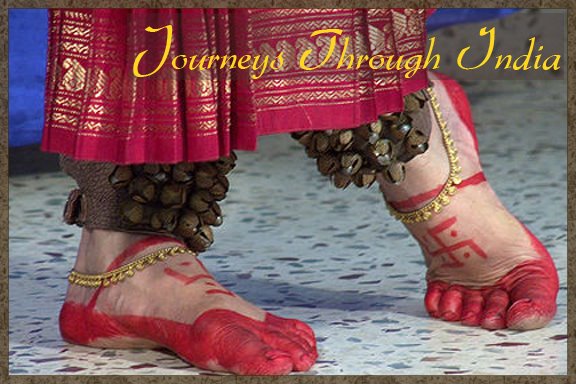How can I even begin to describe the Taj Mahal? It is a masterpiece, an unparalleled masterpiece. Words cannot describe it, photos cannot capture it, it must be viewed in person. Built by Shah Jahan, the grandson of Akbar, as the tomb for his beloved wife, it is a fantastic, fairytale worthy tribute to love, to architectural genius of two cultures, and to the might and wealth of the Mughals. Rudyard Kipling calls the Taj “the embodiment of all things pure” while the Indian Poet Rabindranath Tagore describes as “a resplendent, immortal teardrop on the cheek of eternity.” The walls are decorated with both Islamic and Indian motiefs, but most notable is the Islamic calligraphy.
We had questioned whether it would be worth the visit to Agra, the most touristy spot imaginable in all of India, just to see the Taj Mahal. It absolutely was. No question. Open sky is the only backdrop for this work of art and no amount of tourists can mar the beauty of this pearl. (This is not to say I did not wish there were fewer or no tourists. I kept thinking yesterday that it would have been wonderful to see Fatehpur Sikri at its zenith, with couriers in stately robes, Ranis peaking out of ornate windows, women in beautiful saris hurrying to bring their queens iced sherbet and Emperor Akbar, seated I all of his splendor, playing Parcheesi. But here at the Taj, emptiness seems better suited to the purity of the scene. Perhaps this was the intention; after all, it is a tomb, not a palace.)
After visiting the Taj Mahal, Mom and I went to explore Agra Fort. This has turned out to be a rather expensive day; first the Taj for Rs 750 ($16) and then Agra fort for the reduced price of Rs 250 ($5) because we’d visited the Taj. Now multiply everything by two. It is absolutely worth it, but I am so used to spending next to nothing. Our hotel costs about the same as one Taj Mahal ticket!
Agra fort was crumbling when Akbar restored it. Shah Jahan then replaced much of Akbar’s work with palace buildings in his favorite building material: white marble. In fact, Shah Jahan’s passion for architecture lost him the empire. Shortly after finishing the Taj Mahal and nearly breaking the immense Mughal treasury, Shah Jahan was imprisoned by his son, Aurangzeb, in a section of Agra Fort. From the windows, he could view the resting place of his beloved, but was never allowed to visit his masterpiece. He died in captivity eight years later. When the British took over, they used this fort as a barracks.
Agra Fort is immense. Even the small portion, Shah Jahan’s palace, which is open to the public is huge. Some is under excavation by the Archeological Survey of India, but most is still used by the Indian Army. We saw two Mosques, the private Audience Hall, the Public Audience, one floor of the palace where Shah Jahan lived, including courtyards, fountains, and more, and the room where the Mughal Emperors dolled out justice: a courtroom if you will. It was all amazing, but my senses are becoming dulled by the constant onslaught of opulent grandeur. Not to say that I did not feel as though I were on the border between the world of fairytales and the world I am used to.
After Agra Fort, we visited the Itimad-ud-dualah, fondly known as the Baby Taj. This tomb was built by Empress Nur Jahan, the wife of Jahangir, for her father, Chief Minister Mirza Ghiyath Beg. It is the predecessor of the Taj Mahal and marks the transition from red sandstone and white marble and the beginning of a new style of architecture, perfected in the Taj Mahal, known as “Mughal”, which combines Islamic and Indian styles. The tomb itself is constructed out of white marble but the pedestal upon which it stands is red sandstone. The walls are much more ornate than those of the Taj Mahal. The intricate floral designs, including both curling Persian vines and the stereotypically Indian lotus illustrate the femininity of the designer as well as her ability to unite two culturally different art forms.
We hurried back into town so we could see the Taj Mahal at sunset from a rooftop restaurant. Although the pearly walls changed color a bit, the clouds blocking the sun prevented us from seeing the brilliance boasted of in guidebooks.

Blog Archive
- 05/10 - 05/17 (1)
- 05/03 - 05/10 (2)
- 04/26 - 05/03 (14)
- 04/19 - 04/26 (3)
- 04/12 - 04/19 (6)
- 04/05 - 04/12 (7)
- 03/29 - 04/05 (9)
- 03/22 - 03/29 (4)
- 03/15 - 03/22 (6)
- 03/08 - 03/15 (2)
- 03/01 - 03/08 (1)
- 02/22 - 03/01 (4)
- 02/15 - 02/22 (27)
- 02/08 - 02/15 (11)
- 02/01 - 02/08 (3)
- 01/25 - 02/01 (1)
- 01/18 - 01/25 (26)
- 01/11 - 01/18 (2)
- 01/04 - 01/11 (21)
- 12/28 - 01/04 (16)
- 09/21 - 09/28 (1)
- 09/14 - 09/21 (1)

No comments:
Post a Comment